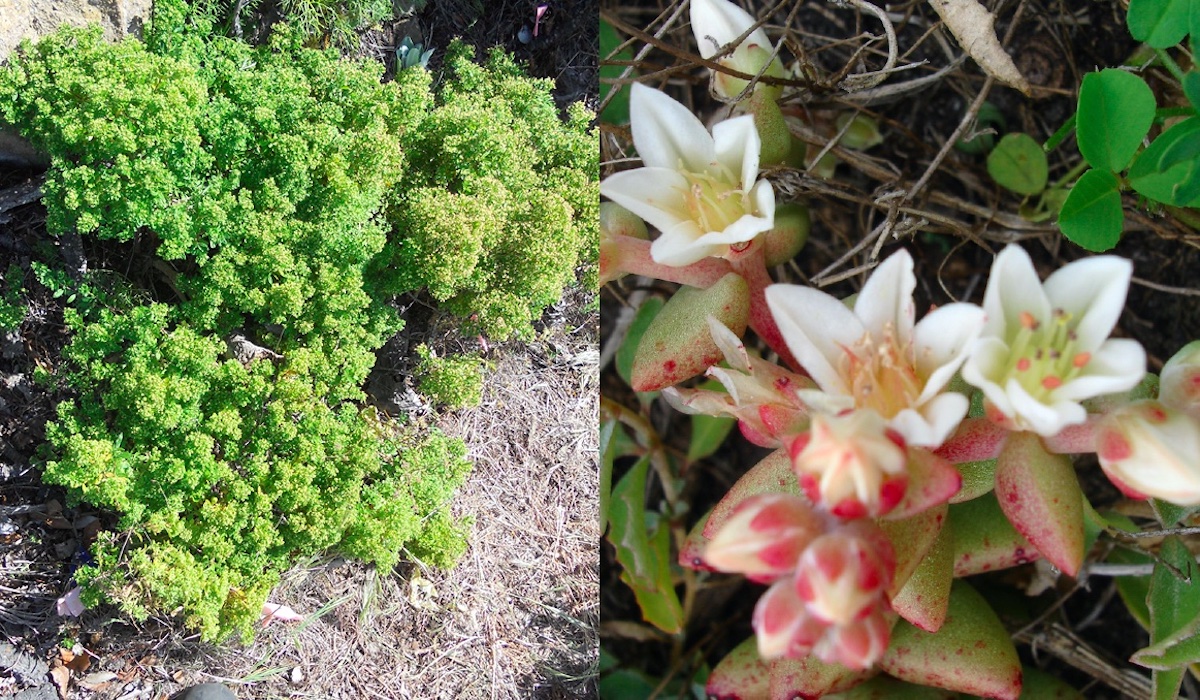Two Rare Channel Islands Plants Snatched from the Snouts of Defeat
With Feral Pigs out of the Picture, Endangered Species Make Impressive Comeback

Two rare Channel Island plant species — the Channel Island bedstraw and Santa Cruz Island dudleya — have been saved from extinction, conservationists announced Wednesday. The survival of the two species, which are found nowhere else on Earth, hinged on their recovery from damage caused by plant-trampling, soil-eroding, grass-munching livestock, namely, sheep and feral pigs.
“The pigs were brought to the islands as farm animals way back in the 1850s,” said Tierra Curry, a senior scientist at the Center for Biological Diversity. “Given that the feral animals had been wreaking havoc on the ecosystem for more than 100 years, it’s pretty amazing that the plants were recovered in just 25.”
The U.S. Fish and Wildlife Service (FWS) has proposed to remove the two plants from the Federal List of Endangered and Threatened Species. Since their initial listings in 1997, and through corresponding protection efforts under the Endangered Species Act, the primary threats to both species have been removed, and their populations have increased and dispersed.
“The Endangered Species Act has saved the lives of 99 percent of the plants and animals under its care, including these two beautiful California plants,” Curry said. “Recovery can take decades, but the investment is worth it to safeguard the biodiversity we all depend on.”
Island bedstraw, a three-foot-tall woody shrub with small greenish-white flowers, had a population of only 600 individual plants when it was listed as an endangered species. Now, there are more than 15,700 individuals spread out across 39 sites around the Santa Cruz and San Miguel islands.
The threatened Santa Cruz Island dudleya has also made an impressive comeback. Also known as the Santa Cruz Island liveforever, the plant is a type of flowering succulent known from only one population on the westernmost tip of Santa Cruz Island in Santa Barbara County. According to the Center for Biological Diversity, “Since the plant’s listing, the population has fluctuated from 40,000 to 200,000 individuals and has stabilized at 120,000 individuals with an increase in distribution.”
“Plants are key contributors to the overall food web and island ecosystem,” said Ken Niessen, a Fish and Wildlife Service botanist. “As the cause of their decline, and now as their caretakers, people have a responsibility to ensure the plants, and the benefits they provide to their ecosystem, are not lost to extinction.”
The past 25 years have been spent remediating the ecological damage, including habitat loss and soil erosion, caused by sheep grazing and the rooting of non-native pigs. Sheep were removed from the islands by 2000, and non-native pigs were removed by 2006; today, the Channel Islands, with the exception of Santa Catalina Island, are free from the problematic livestock that were introduced more than a century ago. According to the FWS proposal, vegetation cover has “increased significantly” on the Santa Cruz and San Miguel Islands since the eradication of herbivores.
Sign up for Indy Today to receive fresh news from Independent.com, in your inbox, every morning.
Following the animals’ removal, the plants’ recovery involved studying, surveying, and protecting their habitat, which took “long-term cooperation and conservation efforts by scientists and land managers,” said Paul Souza, director of the Service’s Pacific Southwest Region.
The proposal to remove the plants from the endangered species list “should be finalized in 12 months after FWS evaluates any public comments they receive on the proposal,” Curry said. “Because the area is protected and so many partners are involved, I don’t see any reason why it wouldn’t be finalized.”
Although the plants have recovered, and primary threats have been addressed, there are still lingering concerns over how the effects of climate change on the California Central Coast Region may endanger the plants in the future. That especially applies to the Santa Cruz Island dudleya, whose single population remains vulnerable to rising sea levels due to climate change.
However, the Fish and Wildlife Service has developed a monitoring plan to ensure the plants continue to thrive without ESA protections.
Currently, there are around 50 plant and animal species listed as endangered or threatened in Santa Barbara County. The Channel Island bedstraw and Santa Cruz Island dudleya are among the “more than 50 species of plants and animals that have successfully recovered under federal protection, including bald eagles, peregrine falcons, humpback whales, Coastal California sunflowers, and Channel Islands foxes,” Curry said.
“Today we get to celebrate the recovery of these two species no longer faced with the imminent threat of extinction, and tomorrow we will be back in the field for those plants that still need a helping hand,” said John Knapp, senior scientist with The Nature Conservancy.
“All visitors to the islands can be part of the success by staying on established trails and roads to protect vulnerable populations,” Knapp said. “Recovery doesn’t happen overnight. It takes sound science, collaboration with many partners, and, most importantly, commitment.”
The Service will accept public comments on the proposed rule and post-delisting monitoring plans from December 1, 2022 to January 30, 2023.
To learn more about the history of island plants on the northern Channel Islands, visit “Restoring Rare Plants on California’s Channel Islands,” an interactive StoryMap developed by the U.S. Fish and Wildlife Service in collaboration with Kendra Chan Directorate Fellow Daniel Cisneros.
Support the Santa Barbara Independent through a long-term or a single contribution.



